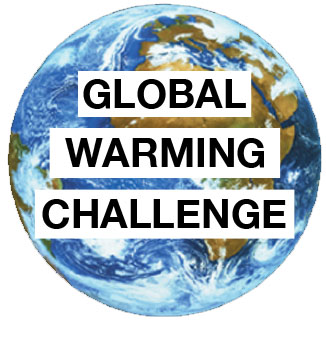Yes, Virginia, there is a polar bear
Yes, Virginia, there is a polar bear
Margaret Wente
Friday, February 01
Every eight-year-old knows the polar bears are drowning. “I feel sad for them,” said one friend’s kid the other day as he bundled up for school. Maybe he’d seen those TV ads featuring adorable baby bears with voiceovers by appealing children. “The ice is melting because of global warming,” lisps a little girl over pictures of polar bears apparently swimming for their lives. “Baby bears have died. Please help them.”
No one wants the polar bears to die. Obviously the grownups should do something – and so they are. A host of scientists, environmentalists, legislators and worried citizens is pressuring the U.S. government to add polar bears to the list of endangered species. A decision is expected soon, and they’ve got an impressive array of studies to back them up. One study forecasts that the melting of the Arctic sea ice could kill off two-thirds of the polar bear population by 2050 by destroying their habitat.
More…That the Arctic is experiencing dramatic climate change is beyond doubt. Temperatures in some places are as much as 5 degrees Celsius higher than they were a few years ago, and since 1980 the area of water covered by the Arctic ice pack has shrunk by almost half. But are the bears doomed? Well, here’s something to cheer your youngster up. Scientists recently unearthed a polar bear jawbone that’s at least 110,000 years old. “They probably have survived situations in the past where the Arctic was warmer and there was less seasonal sea ice than today,” says Olafur Ingolfsson, the man who discovered the jawbone. “Despite the ongoing warming in the Arctic today, maybe we don’t have to be quite so worried about the polar bear.”
Not reassured yet? Then maybe this will help. Yesterday I talked with a man named J. Scott Armstrong at the Wharton School in Pennsylvania. He’s not an expert on polar bears or climate change.
“Until a year ago, all my friends knew more about climate change than I did,” he says. But he is an expert on forecasting methods. In fact, he wrote the book on it, Long-Range Forecasting, and also edited the standard textbook in the field, Principles of Forecasting. He analyzed two of the most influential polar-bear studies and concluded that their forecasts were rather short on evidence-based science and standard forecasting methodology. One principle of forecasting is that complex models harm the accuracy of the forecast. And forecasting the polar bear population 40 years from now depends on very complex models indeed. “There is a whole set of assumptions you have to make at the beginning,” he says.
“For global warming, you have to have accurate forecasts about the direction and change in long-term temperatures, and the effects of those changes.” Then you have to forecast the shrinkage in sea ice and figure out the impact on the bears’ food supply, as well as their ability to find other kinds of food. In other words, it may look scientific, but it’s built on a whole lot of guesswork. In fact, as of today, the polar bears are not endangered and their numbers are not in decline. The worry is that they could be.
Some experts see signs of stress in some polar-bear subgroups and warn that much worse is to come. But the only fact on which everyone agrees is that the worldwide polar bear population has never been higher than it is now.
How good are climate scientists at predicting the future? On the whole, says Prof. Armstrong, they’re probably no worse than any other group of experts – which is to say, not very good at all. Abundant research shows that experts – whether they’re political scientists, stock market analysts, Super Bowl commentators or marine biologists – are no better than non-experts at making accurate predictions. They’re just more certain that they’re right.
This is the origin of something that Prof. Armstrong has named the Seer-Sucker Theory, which goes like this: “No matter how much evidence there is that seers do not exist, seers will find suckers.”
And what about the remedy? If polar bears are declared an endangered species, will it help the bears? Well, not exactly. Even those who want to get them on the list acknowledge that there is nothing we can do to stop a single drop of Arctic ice from melting in the next 50 years. So we’d better hope the bears are as resilient as the optimists (I’m one) believe they are. If they’ve survived a few big melts, then maybe they’ll survive this one.
Environmentalists need the polar bears to be endangered because they are a marketing tool – an incredibly successful one – to rally people to the cause of global warming. They’re far more photogenic and emotionally compelling than, say, bluefin tuna, which we’ve nearly fished out of the seas. The bluefin really are endangered. But you won’t find very many eight-year-olds who feel sad over them.
A lot of people think there’s nothing wrong with using polar bears as propaganda tools. They write me all the time to say, “I don’t see the harm if the ends justify the means.”
Many of them think it’s deeply wrong, even morally wrong, to question the science of climate change, because it’s tantamount to giving comfort to the enemy. Climate change is such a crisis that the facts don’t matter. Besides, they protest, “Shouldn’t we err on the side of caution?”
Yes, we should, says Prof. Armstrong. “If you are uncertain about a situation, you should really be very conservative about your forecast.”
There’s another term for extreme uncertainty, he adds. It’s called ignorance. “And I don’t think you should base public policy on ignorance.”

Leave a comment